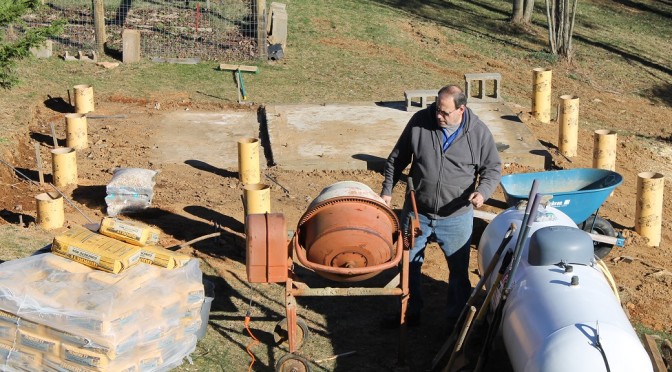While planning the construction of our small barn during an abnormally warm December, Cog declared the frigid winter weather would arrive as soon as we started building. And he was right on the money. In between the consistently wrong and ever changing weather forecasts, the barn is being raised in fits and starts. I assist where I can, but I am only the trusty assistant while Cog is the real magician.
We found a day when the temperatures stayed above freezing and the winds finally died down a bit and poured the concrete piers. This took a few days of prep prior to pouring in order to dig the holes for the concrete tubes and use a device called a transit to ensure the piers on the hill ended up at a relatively equal height so the base of the barn would be level. The transit, a surveyor’s tool set on a tripod you’ve probably seen used on the roadside, measures height on a stick. A two person operation, we re-measured several times because the winter winds on the edge of our mountain can be relentless.
Concrete day arrived, and eight hours and a busted concrete mixer later, the piers were poured. Because freezing temps were on their way, we mixed the concrete with warm water before pouring it into the tubes. We proceeded to wrap each tube with insulation, then covered them with a plastic bag. This set up a warm thermal environment so the concrete could set without the water in it freezing, resulting in crumbly concrete. Cog said they looked like rows of dwarves hunkering down in the cold.
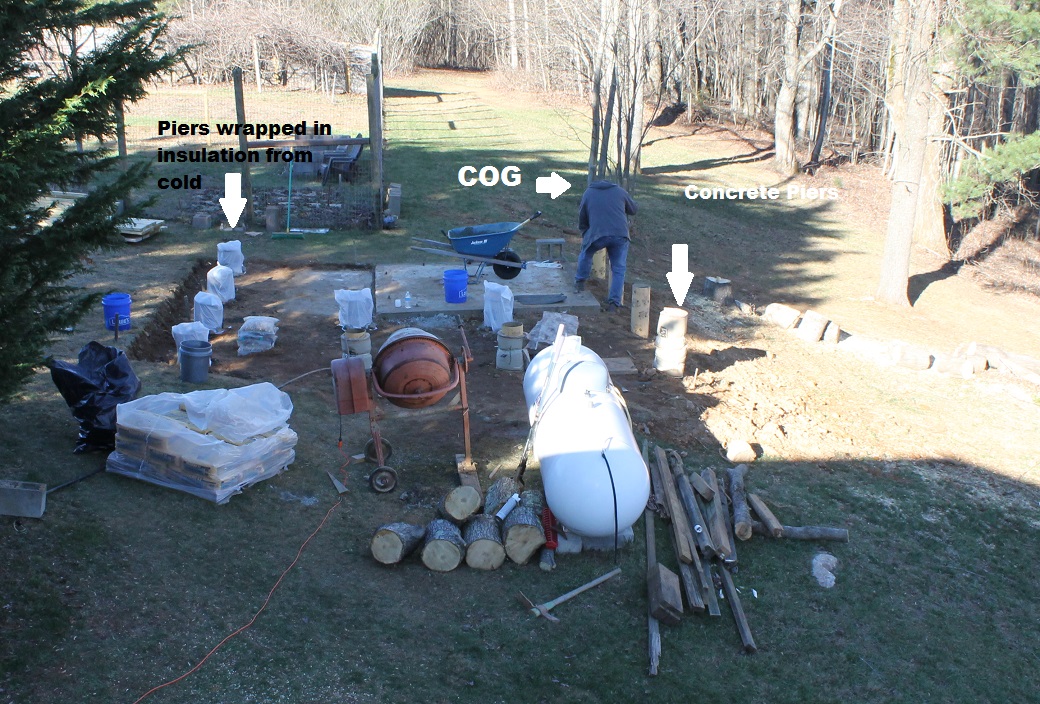
And three working days later...
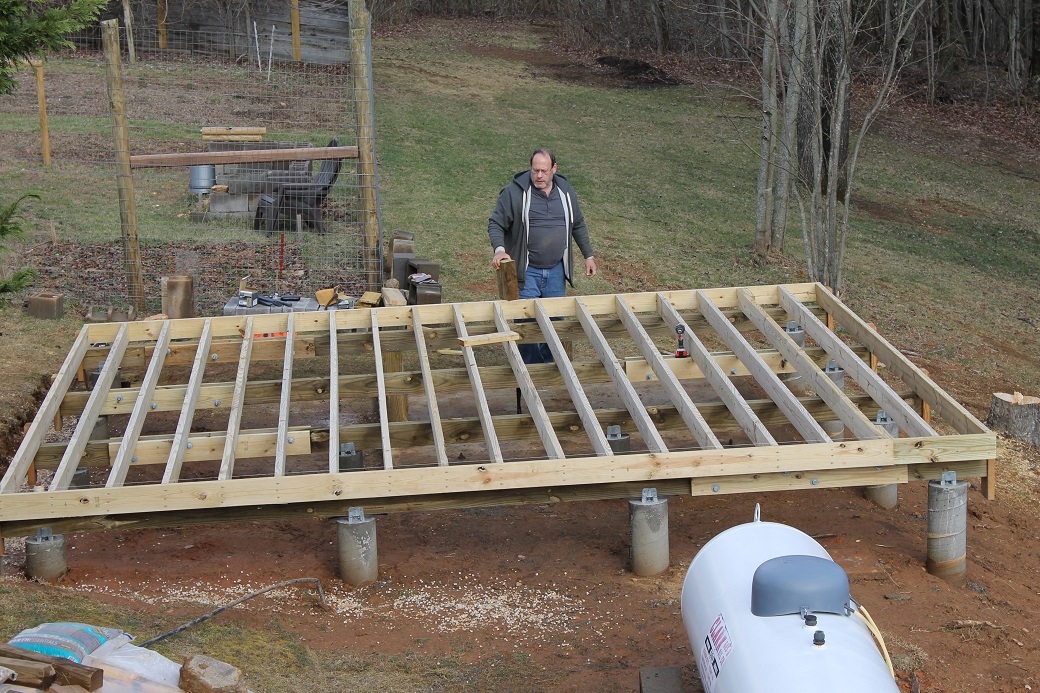
In between outdoor work sessions, while searching in the large freezer last week, I came across vegetables I had frozen fresh and then promptly forgot. As a compulsive canner, it was obvious what needed to be done. I must make soup!
Recalling the old folk tale Stone Soup, where the hungry stranger tricked the townspeople into each contributing something to make a wonderful eclectic stew, I set about poking into all my food places to see what I could concoct. Each storage space offered something unexpected. After examining the food pantries, freezers and the fridge, it was clear to me I would need to make not one, but two soups.
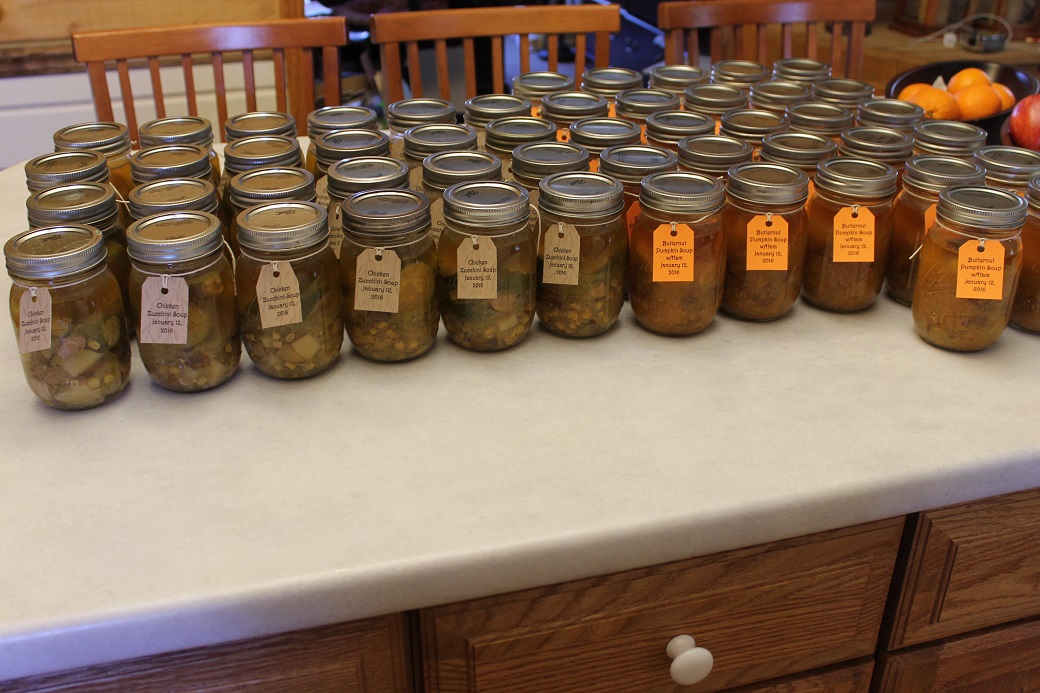
The result was 25 jars of Chicken/Zucchini Soup with potatoes, corn, celery and onions, and 28 pints of Butternut Squash Soup with pumpkin, ham, yellow split peas, potatoes, onion and celery. Both morphed into wonderful stick-to-your-ribs creations, well worth the time to re-inventory what I’d frozen. Served with rice, noodles, quinoa or even mashed potatoes (invented by my kids) I love having home cooked 'fast food' ready to heat whenever we want it.
Finally I have wonderful news to report about propagating difficult plants. Over the past few years I have attempted to follow several methods for taking wood cuttings from an ornamental cherry tree, our enormous tree sized blueberry bushes, and the hardy kiwi vines in order to grow more. Using commercial rooting hormones, varying the time of year and types of cuttings has only yielded sporadic results.
Recently, while I was poking around for additional information about willow bark tea, I stumbled upon a tidbit; organic farmers use white willow bark as a natural rooting hormone for cuttings. Since Cog was about to topple a beautiful, but diseased, old Cherry Kwanza tree in our front yard, I took handfuls of cuttings from the shoots growing out of the shallow sprawling roots. I put one handful in a jar with regular water and the other in a jar with freshly brewed white willow bark tea after letting it cool.

At first nothing happened. I changed the tea water every few days because it looked a bit slimy and was developing a film on the jar and the bottom of the wood cuttings. Then, about ten days later, the small buds that were on the cuttings when I took them developed green tips. Now, a few days later, there are green leaves coming from the first green shoots and more threatening to come out on the others. The very beginnings of roots are forming on the bottoms as well.
I have since changed the control group, which has not a single green node, over to willow bark water. I am just plain excited to see how well this will work with the blueberries. I told Cog, “We could plant blueberries everywhere!” Can we ever really have too many?
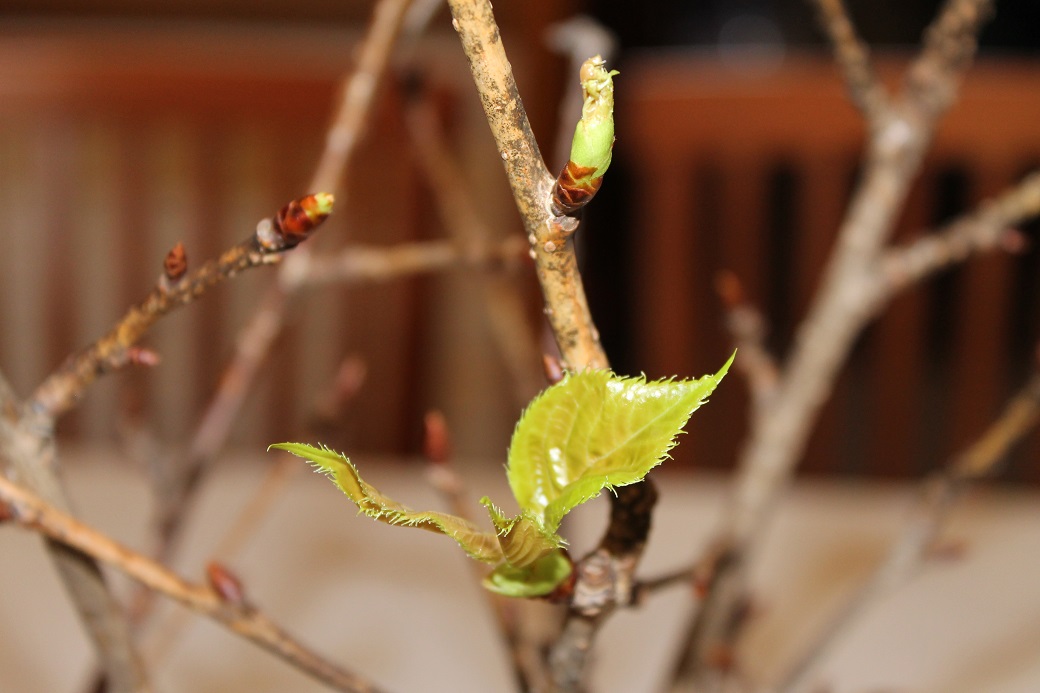
Mrs. Cog
1-16-2016
